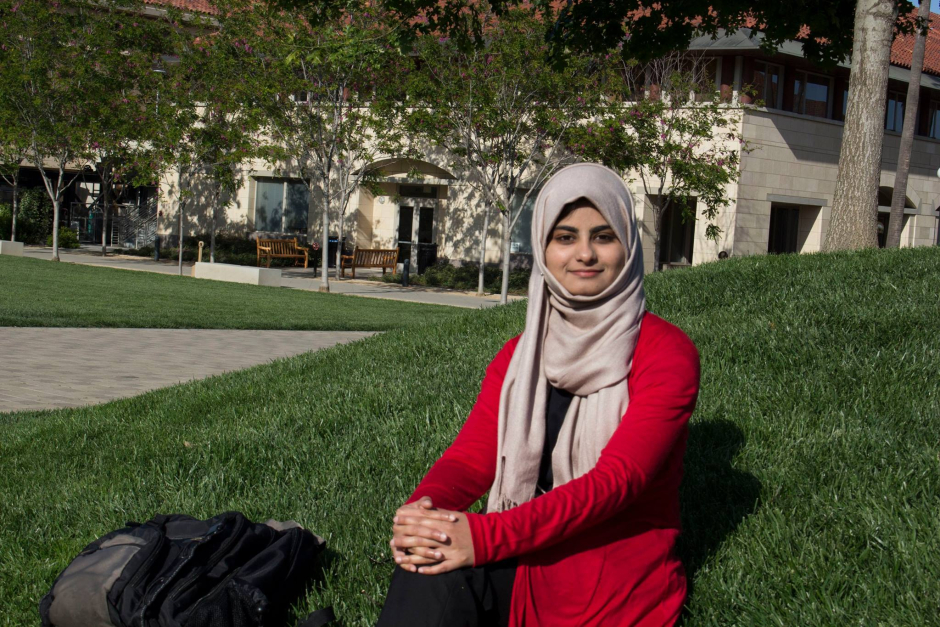An International Oil & Gas Conference is taking place in Islamabad. Accolades are being rewarded to highly competent students who have produced extraordinary research work. A sophomore student is announced at the top the list, winning the “Best Research Paper Award”. Ironically, she presented a paper on Artificial Intelligence in an oil & gas conference, flawlessly emerging victorious and leaving her seniors behind. Little did she know that in three years, she would score a fully funded scholarship to Stanford University and work for a Fortune 14 company.
Batool Arhamna Haider opened her eyes in Karachi. Her family later moved to Oman where she received her early schooling from an Indian school. They moved back when Arhamna was in her teenage years, and she completed her A’ levels from The City School and applied to the undergraduate program of Petroleum Engineering at NED University of Engineering & Technology. Being a child, she was always enthusiastic about building new things and believed science was her super power that can help her to give back to the society.
The Road to Stanford University
At NED University, Arhamna made sure to strike a balance between academics and extra curricular activities. She engaged in research work, participated in student contests, presided at NED Debating Society and acted as an Editor-in-Chief for her departmental magazine, “Petrospective”. Meanwhile, keeping her GPA leaned towards a 4.0. She shares,
“Student contests and conferences greatly boosted my confidence and ignited a passion in me to pursue research activities, which in the coming years helped build my strong academic portfolio.”
When Arhamna started her undergrad program, she got to know about a senior who made to Stanford that year. She reached out to his colleagues to know about his accomplishment and the path he chose. Soon, she was contrasting herself with him and determining what he did and what approach can she take? She had a strong belief, if he could do it, then she could too.
The Chairman of Petroleum Engineering helped Arhamna through his contacts at Stanford University. In the years to come, one of those contacts became her supervisor at Stanford. Working on her departmental magazine as the Editor in Cheif, she reached out to Dr.Atta ur Rehman for an interview. As impressed as he was, he even offered Arhamna to write her recommendation letter for Stanford. She had struck gold and could not believe how the universe was favoring her passion. The recommendation letter penned by the internationally coveted personality added a gold weight to her Stanford application. After completing her undergrad program, Arhamna worked in the oil and gas industry for a year. She credits her university to have landed a job that provided her opportunity to dwell further in research work. The company supported and provided her an opportunity to publish more research work. When the time came, all of these dots connected to build her strong application for Stanford.
When Arhamna landed at Stanford, she realized how much more there was to learn. Sharing her early experience at Stanford, she recalls,
“Words fail me to define my experience at Stanford. When I was selected for NED University, I considered myself to be at the top of the world. That changed when I started at Stanford. The abundance of knowledge around me made me realize I had no idea where the world was heading. Stanford takes your brain, stretches it to the maximum and change everything about you!”
At Stanford you are required to complete a small set of courses related to your specialization then you have the freedom to take any course that you want. Arhamna was surprised to find literature students taking engineering courses at the university. Although her undergrad degree compelled her to study oil & gas and find a job in the same industry, but her interest had always wandered towards Artificial Intelligence. She took this as an opportunity at Stanford and enrolled herself in computer science and machine learning courses.
Beyond Stanford
Soon after completing her post-graduate degree, Arhamna realized she has gained a diverse set of knowledge. When she started her job hunt, oil & gas industry was crashing down. The company where she interned, had laid off hundreds of its employees. Arhamna played the crisis to her strength and decided to pivot her career from petroleum engineering to computer science. Quite frequently in her interviews, it was pointed out that she had no prior experience working in computer science but she did not back down. The circumstances brought her to a Fortune 14 company that was formulating a research team. Seeing her academic background and coveted research work, Arhamna was immediately offered a place in the team as a Data Scientist.
Here at United Health Group, now her journey starts as a budding data scientists working on machine learning and data mining. She is working on a project she calls, “Human Face of Big Data”. The project revolves around implementing machine learning and data mining principles to understand employees of a company. The company is home to 200,000 employees, so there is abundant data pertaining to their education, experience, ethnicity, and previous companies they had worked for. The project aims to help the organization determine the percentage of employees who are satisfied with the job and plan to stay in the company for the years to come. The project is not aimed to hit on employees, but to predict their level of satisfaction to perform better human resource management and to target problems pertaining to dissatisfaction of the employees.
When asked about the number of fellow women at workplace, she shares that STEM is pretty much male dominant. There is only one girl alongside her who is an engineer. Though she corresponds with the human resource department which has a major chunk of women participation. When asked if she had faced discrimination based on gender and religion, she shares:
“I never felt a negative feeling towards me due to my religion. In fact, I believe people respected me more because I have my job. Since I have spent the majority of my time at the campus or with professional people, I have come to realize that they only value your vision and hard work. The rest dulls in the contrast such as your country or religion.”
Arhamna is now working towards improving herself as a data scientist and giving back to her company. She now plans to pursue her doctoral degree in machine learning. She has defined her ultimate goal to spend her life proving the hypothesis that one master algorithm can overcome the need of using different algos for distinct purposes such as image processing, linguistics, kinetics, etc.
How it happened?
Arhamna would not have traveled half way around the world if it wasn’t for the support of her parents. After graduation, generally girls in Pakistan are expected to get married. However, Arhamna’s mother took the pressure upon herself and never let it reach her daughter. She consistently advised her to focus on her applications and reached out to extended family members who had studied abroad. As determined as her daughter, she made sure Arhamna becomes the first women in her family to study aboard all on her own. Last year, Arhamna tied the knot and she finds herself lucky to find more support from her husband. He has advised her not to stop at at a post grad degree but excel further in her academic and professional pursuit.
She strongly urges women to pursue their academics and professional careers,
“Just do it! Life is too short, and you only get one. You should explore the world and what better opportunity there is, than education. Education will always make you humble. To parents, have faith in Allah when deciding to send your daughters for the pursuit of their academic ambitions.”
She advises the younger lot, not to follow their passion blindly but pursue what is meaningful. She believes a meaningful passion enables us to give back to the society. Affirming that passion can change with time, success and place, Arhamna has established that her true passion landed her at Stanford University and transformed her from a petroleum engineer to an enthusiastic data sciences.












